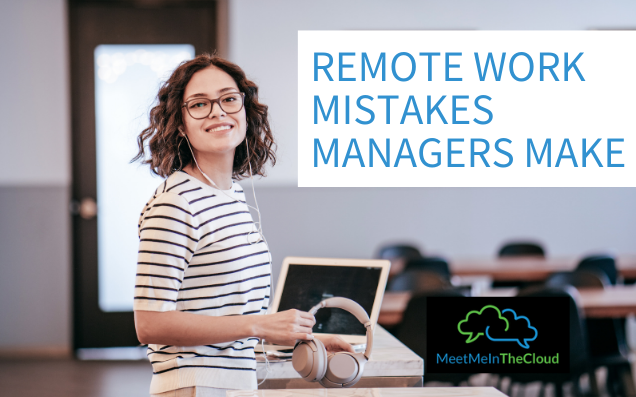Remote work isn’t for everyone, though most people agree that having the ability to work from home some or all of the time is a welcome opportunity. And managing remote teams and employees is an exercise in patience and willingness to adjust when things aren’t going as planned.
We’ve previously discussed remote work tips to maintain productivity and avoid burnout, now let’s go through some of the remote work mistakes managers make, and how to avoid them.
Not Keeping Remote Employees Up to Speed on Company Updates
Creating a remote work or collaboration tool database that doesn’t include a “news” or “bulletin board” section for company announcements and updates is one of the first mistakes we’ll talk about.
Remote workers need to know they are still a valued member of your team and your company. And it’s very easy for resentment to grow if onsite employees are the ones who have to relay the latest company updates to their remote coworkers.
You can help bridge these gaps in a variety of ways – setting up regular “state of the organization” video conferences that can either be streamed live or found later on a “company dashboard” or intranet area, creating a thread within your collaboration tool of choice for company updates, or posting all top-down communication in one board, folder, or area of your website.
Waiting Until There are Productivity Issues Before Setting Up a Process for Progress Check-Ins
The biggest misconception about remote work that managers and business executives worry about is the loss of productivity. Many articles actually speak to an increase in productivity when employees start working from home, but it’s also important to realize that switching to a remote work model is a big adjustment.
Another mistake managers make is waiting until there is a productivity issue to create a system of accountability for projects. If you can give your employees a procedure for tracking progress before it feels like a punishment, more team members will view it as a helpful tool rather than a method of micromanagement since you aren’t all working from the same physical location.
Also, if you don’t have some way of monitoring your employees’ work quality and speed when there aren’t any issues, you’ll have a hard time proving or addressing any problems that arise later, since you don’t have a baseline to compare against.
Neglecting Your Team’s Emotional Condition
Many managers (incorrectly) assume that working remotely is somehow easier for their team members than working in an office. While it is true, the casual dress and the ability to tend to needs at home are perks to the WFH life, it’s important to remember that each of your team members is now in a different work environment and the work-life harmony is much more difficult to keep balanced when work and home are the same place.
Neglecting your team’s emotional condition can quickly lead to burnout and resentment. Make sure there are discussions and collaboration threads that are not work-related. This boosts morale and gives your team something to look forward to while also continuing to build team relationships.
Opening these communication channels can also help you manage any conflicts that arise between team members. If your staff is comfortable coming to you with issues, they can be more easily resolved.
Collaboration Services for the Best Team Experience
Meet Me In The Cloud is a global leader in collaboration adoption services and scalable solutions that help organizations compete, grow, and succeed in an accelerating world. Explore Meet Me In The Cloud’s managed services and collaboration services.
Whether you need training and education, event assistance, or other collaboration-based support and services, contact us today.

